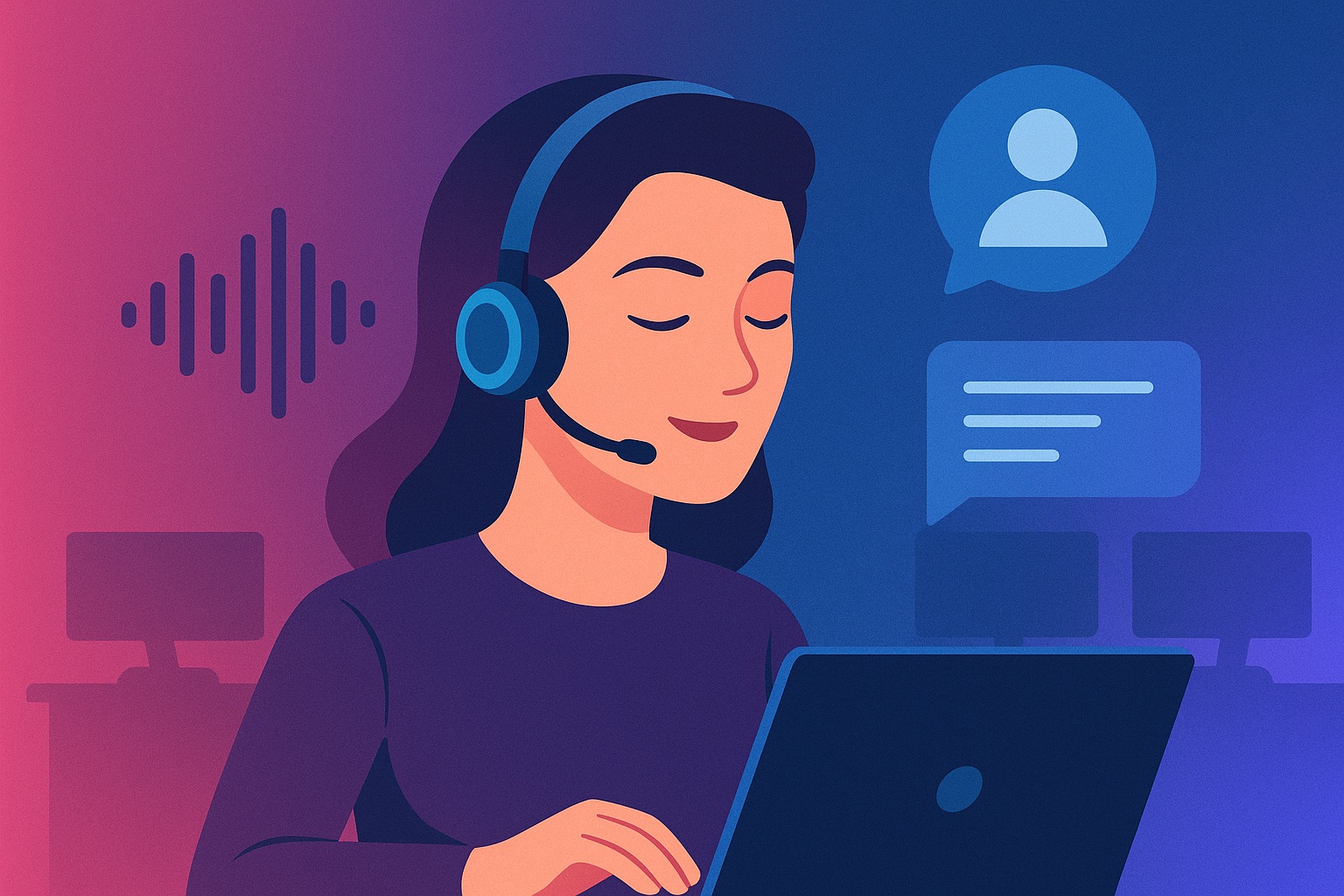As we hit the midpoint of 2025, the customer service landscape is undergoing a seismic shift. Traditional call centers, once the backbone of business-customer interactions, are giving way to AI voice agents powered by advanced natural language processing (NLP), speech recognition, and generative AI. These intelligent systems aren't just automating responses—they're handling entire conversations, booking appointments, and even creating leads in real-time. According to recent reports, AI automation is enabling companies to slash agent headcounts by 40-50% while maintaining or improving service quality. This article explores how AI voice agents are revolutionizing customer service, their benefits, real-world applications, and what the future holds.
The Limitations of Traditional Call Centers
For decades, call centers have been plagued by inefficiencies. High operational costs, long wait times, and agent burnout are rampant. A 2023 survey highlighted that 63% of agents experience high burnout, contributing to a 38% annual turnover rate. Customers often face frustrating interactive voice response (IVR) systems with rigid menus, leading to dissatisfaction—especially when calls spike during peak hours. Despite the rise of digital channels, phone support remains preferred for complex issues, with 57% of customer care leaders expecting call volumes to increase by up to 20% in the coming years. These challenges have created a perfect storm for disruption, paving the way for AI voice agents to step in.
Understanding AI Voice Agents: The Technology Behind the Transformation
AI voice agents are sophisticated virtual assistants that use voice recognition, NLP, and machine learning to engage in natural, human-like conversations over the phone. Unlike outdated IVR systems, they leverage technologies like automatic speech recognition (ASR) to convert speech to text, NLP to understand intent, and text-to-speech (TTS) for responsive replies. Built on platforms such as Amazon Lex for intent recognition, AWS Lambda for backend logic, and integrations with models like ChatGPT for contextual responses, these agents can also connect to CRMs to log leads or support cases automatically.
In practice, a call flows like this: A customer dials in, the agent greets them conversationally, processes queries (e.g., "My AC isn't cooling"), retrieves data from integrated systems, and resolves the issue—such as booking a technician—or escalates to a human if needed. This seamless integration makes them "programmable at scale," turning voice from a mere feature into the core of customer interactions.
Key Benefits: Why Businesses Are Making the Switch
The adoption of AI voice agents is driven by tangible advantages that address traditional call center pain points:
- 24/7 Availability and Reduced Wait Times: Agents operate around the clock, handling multiple calls simultaneously without fatigue, cutting wait times dramatically and boosting customer satisfaction.
- Cost Savings: Automation reduces staffing needs by up to 50%, with McKinsey estimating a 30% drop in service costs. For small businesses, this means reallocating resources to growth rather than overhead.
- Personalization and Efficiency: Using customer data, agents deliver tailored responses, such as multilingual support or context-aware interactions, improving first-call resolution rates and reducing handling time by 40%.
- Scalability and Better Employee Experiences: By offloading routine tasks, agents free human reps for complex issues, lowering burnout and turnover while scaling to handle surges in volume.
- Higher Engagement and ROI: In applications like appointment reminders, AI agents achieve better connection rates than traditional robocalls, leading to increased bookings and revenue.
These benefits are already evident in 2025, with 55% of businesses planning to implement AI in voice channels within the next 6-24 months.
How AI Voice Agents Are Replacing Traditional Call Centers
Rather than outright elimination, AI agents are augmenting and often supplanting human roles. They handle 70-80% of routine interactions, such as order status checks or basic troubleshooting, while escalating nuanced queries. In SMBs like HVAC or plumbing firms, agents answer calls, triage emergencies, and integrate with CRMs to create leads—transforming missed calls into opportunities. Larger enterprises use them for omnichannel support, where voice agents sync with chat or email for consistent experiences.
Real-time discussions on platforms like X highlight this shift: "AI is about to make customer support genuinely... not suck," with voice agents that can be interrupted and feel human. By mid-2025, voice is becoming "the core product," especially in industries facing high call volumes.
Industry-Specific Applications in 2025
AI voice agents are tailoring solutions across sectors:
- HVAC and Plumbing: Agents handle after-hours emergencies, book repairs, and upsell services, reducing missed calls by 90% and boosting leads.
- Healthcare: They triage symptoms, schedule appointments, and ensure HIPAA compliance, minimizing no-shows and providing 24/7 support.
- Retail and Banking: Agents process orders, check balances, and detect fraud via voice analysis, enhancing security and personalization.
Case studies show banks reducing customer service calls by over 20% through voice agents.
Emerging Trends and Challenges
In 2025, trends include voice cloning for more human-like interactions, multi-language support, and integration with third-party services like CRMs or logistics systems. The market for AI voice agents is exploding, with projections for widespread adoption in 1-5 years.
However, challenges persist: Accuracy in accents or noisy environments, limited emotional intelligence, and integration hurdles. Businesses must train agents on diverse data and ensure seamless human handoffs.
Looking Ahead: A Fully Autonomous Future
By 2029, Gartner predicts agentic AI will resolve 80% of issues autonomously, cutting costs by 30%. In 2025, we're seeing the foundation: Organizations deploying 50-500 agents for workflows, from email responses to task automation. The shift to "B2A" (Business to Agent) interactions is imminent, where AI buyers negotiate and execute deals.
Conclusion
AI voice agents are not just replacing traditional call centers—they're redefining customer service as efficient, personalized, and scalable. For businesses in 2025, adopting this technology means staying competitive in a voice-programmable world. Whether you're in HVAC, healthcare, or beyond, now is the time to pivot to AI-driven support and unlock unprecedented growth.
